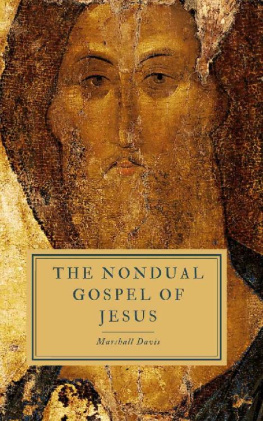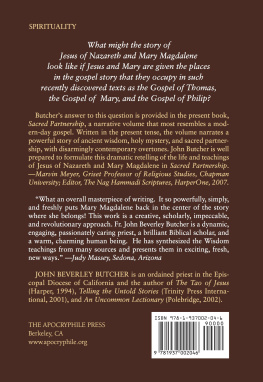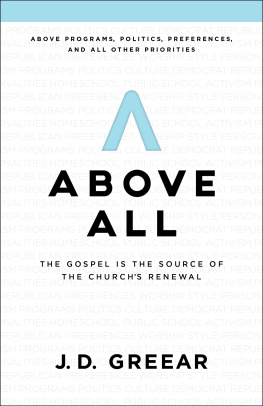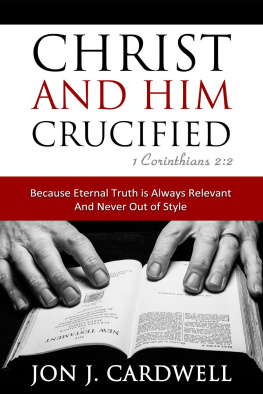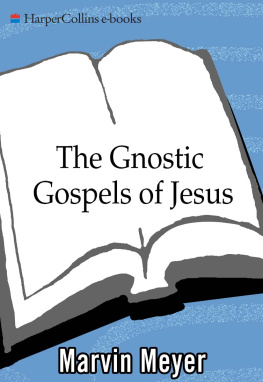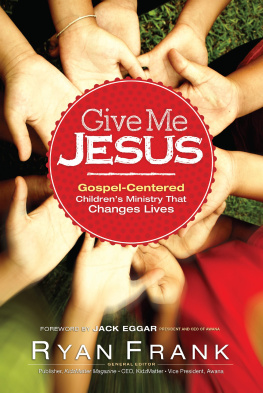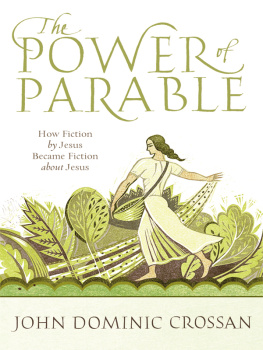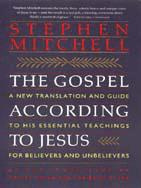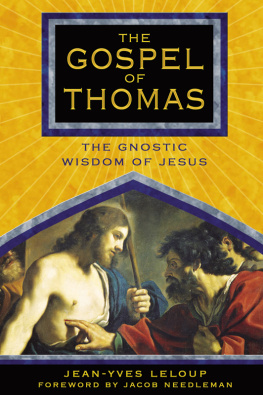All rights reserved.
No part of this publication may be reproduced, distributed, or transmitted in any form or by any means, including photocopying, recording, or other electronic or mechanical methods, without the prior written permission of the publisher, except in the case of brief quotations embodied in critical reviews and certain other noncommercial uses permitted by copyright law.
The cover art is Christ the Redeemer Icon by Andrei Rublev. Tempera on panel. Early 15th century (1410s). Public domain.
Preface
This gospel is unlike any you have ever read. It is a gospel told in the first person by Jesus of Nazareth. The Gospel According to Jesus. What was Jesus thinking? What was he feeling? What was he trying to communicate in his stories and actions? What was his experience of God? This is the gospel that Jesus would have written.
This is not an ancient text. It is not a translation of an ancient scroll discovered in the sands of Egypt, a cave by the Dead Sea, or an archeological dig in Galilee. There is no indication that Jesus ever wrote a word, apart from scribbling in the sand during the gospel story of the woman accused of adultery. This book is a twenty-first century gospel. It is written using ancient sources in the same manner as gospels were written in the early centuries of the Christian Church.
Gospel writing has become a lost art. This book is an exercise in recovering this ancient spiritual practice. In the early centuries of the Christian movement, many people wrote accounts of the life and teachings of Jesus. The author of the Gospel of Luke, traditionally considered to be the physician and traveling companion of the apostle Paul, begins his gospel with these words:
Many have undertaken to draw up an account of the things that have been fulfilled among us, just as they were handed down to us by those who from the first were eyewitnesses and servants of the word. With this in mind, since I myself have carefully investigated everything from the beginning, I too decided to write an orderly account for you, most excellent Theophilus, so that you may know the certainty of the things you have been taught. (Luke 1:1-4 New International Version)
Luke says there were many other gospels in existence when he set out to write his gospel for his Roman patron Theophilus. We know that one of Lukes sources was the Gospel of Mark. He quotes it verbatim often. Scholars have identified another source known as Q (from Quelle, the German word for source), which was a collection of sayings of Jesus without a narrative. There was a source or multiple sources - that scholars call L, composed of oral traditions circulating at the time.
In addition Luke tells us there were many other gospels available to him. This means that the first generation of Christians produced a plethora of gospels besides the ones included in the New Testament. The Ante-Nicene Fathers mention some of these lost gospels: The Gospel of the Hebrews, the Gospel of the Ebionites, and the Gospel of the Nazarenes. None of these ancient gospels have been preserved.
Some gospels specialized in the early life of Jesus: The Infancy Gospel (Protoevangelion) of James, the Infancy Gospel of Thomas, Birth of Mary and Infancy of the Savior. Others focused on the Passion of Jesus: The Gospel of Peter, Gospel of Nicodemus, Gospel of Bartholomew, Book of the Resurrection of Jesus Christ by Bartholomew the Apostle.
Some gospels were collections of the sayings by Jesus without a narrative framework, similar to the hypothetical Q document. Among these were the Gospel of Thomas, the Gospel of Judas, the Gospel of Mary, Gospel of Philip, Dialogue of the Savior and many others. We have copies of these.
When the New Testament canon was closed in the fourth century, the church authorities ordered all non-canonical gospels and epistles to be destroyed. The vast majority of churches complied with this order, but some resisted.
One Christian community in in Upper Egypt hid their copies of the outlawed writings in an earthenware jar. These were discovered in 1945 and are known as the Nag Hammadi Library. It is a collection of thirteen ancient codices containing over fifty texts. One can only imagine how many hundreds of other gospels and epistles have been lost.
This brief history lesson is meant to show that the art of gospel writing was alive and well for the first three hundred years of Christianity. One did not need to be an apostle or an eyewitness to be a gospel-writer. Luke, for example, admits that he was not present at the events he records. He used written and oral sources in his work. In fact none of the four gospels in our New Testament were written by apostles or eyewitnesses.
Biblical scholars (except for the fundamentalist variety) admit that the Gospel of Matthew was not written by the apostle. It was originally anonymous. Only in the second century did the tax collectors name become attached to the book. The Gospels of Mark and Luke do not even pretend to be penned by apostles.
The Gospel of John, which is the latest of the four canonical gospels, is the only one that boasts a connection to one of the twelve apostles, although it does not identify the apostle by name. In the final verses of the Gospel of John, the author speaks about the apostle in the third person, saying that he used the beloved disciples testimony as a source for his gospel.
Likely none of the extant non-canonical gospels were written by apostles, although most bear the names of apostles and other biblical characters. Pseudonymous writing was a common practice in ancient time. It was not considered deception or forgery. These authors were writing in the style and spirit of a certain apostle. Many of the Pauline epistles in the New Testament are pseudonymous works, and yet the church considers them inspired by God.
Early Christians wrote gospels to communicate spiritual truth, not to record verbatim conversations or eyewitness accounts of historical events. All canonical and non-canonical gospels and epistles were written in this style. Gospel-writing was a spiritual exercise common in the early Christian centuries.
This gospel is my contribution to this historic Christian practice. To write a gospel all one needs are sources. Thanks to textual criticism and the historical critical method, we have far more reliable information than they had two thousand years ago. So we can write gospels today. That is what I have done.
I do not pretend that my gospel is a verbatim account of the words of the historical Jesus. Neither are any of the ancient gospels. There were no cellphones or video cameras recording Jesus teachings and miracles. There were no television crews perched outside the garden tomb on Easter morning. All gospels are interpretations of written and oral traditions.
Each of the canonical gospels had a spiritual purpose. Matthew spoke to Jewish Christians and presented Jesus as a new Moses. Luke spoke to Gentile Christians and stressed the role of non-Jews and women. John used the Greek philosophical concept of the Logos to communicate the universal significance of Jesus ministry to a Hellenistic audience. My gospel is an attempt to highlight the nondual nature of Jesus teachings.
Every gospel emerges from an historical context and has a theological purpose. Most gospels arose in response to a crisis. The three synoptic gospels (Matthew, Mark, and Luke) were written in the context of the destruction of Jerusalem, the end of temple religion, and the deaths of the original apostles. Johns Gospel was written at the end of the first century when Christianitys ties to Judaism had been severed and Roman persecution of the Church had begun.
I write my gospel as an American in a time of declining church attendance. The newest data on the American Christianity has been released, and the news is not good. The COVID pandemic has accelerated what was already a steady pattern of decline. The church is losing members rapidly. Denominational leaders are unable to staunch the flow of people out the doors.

